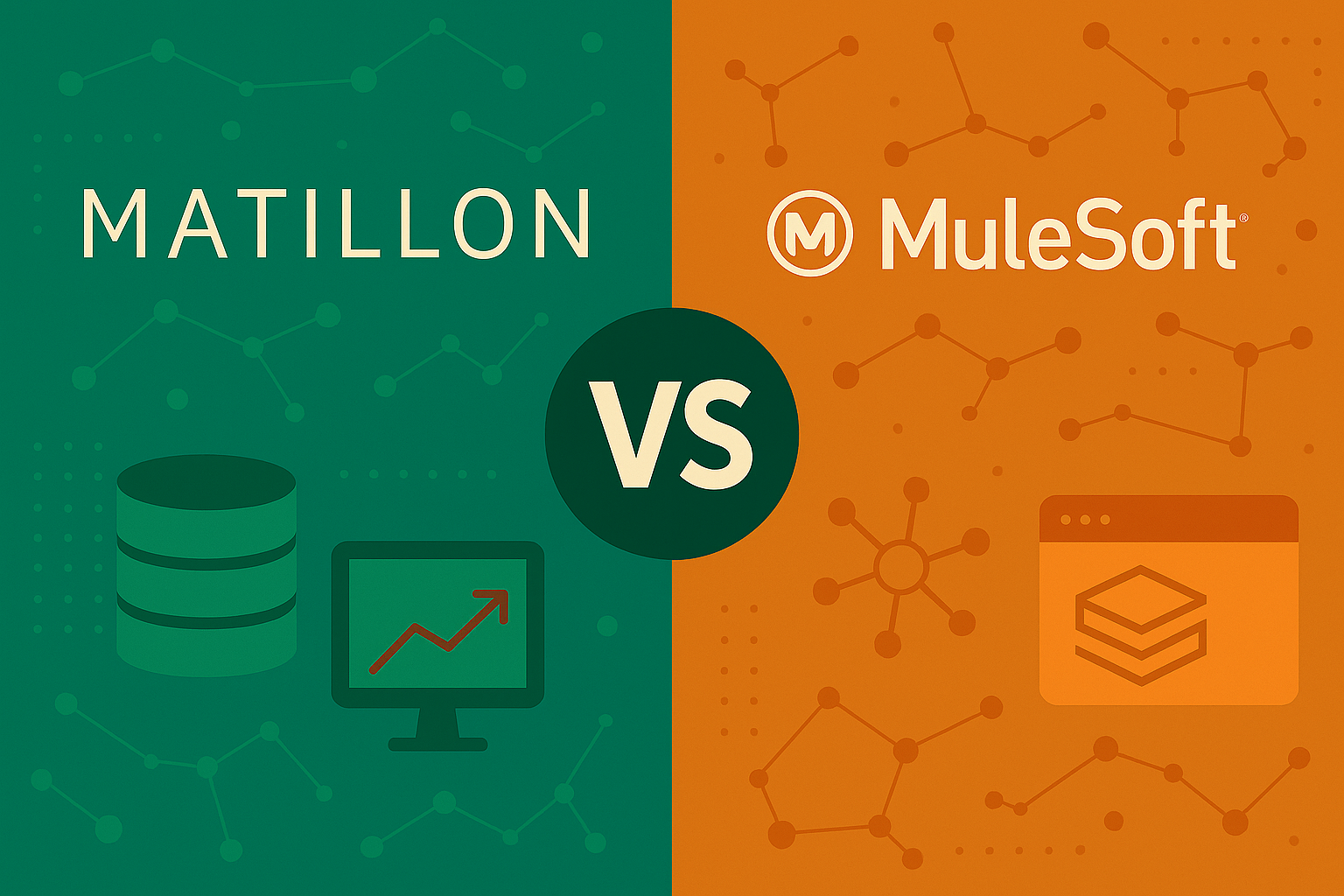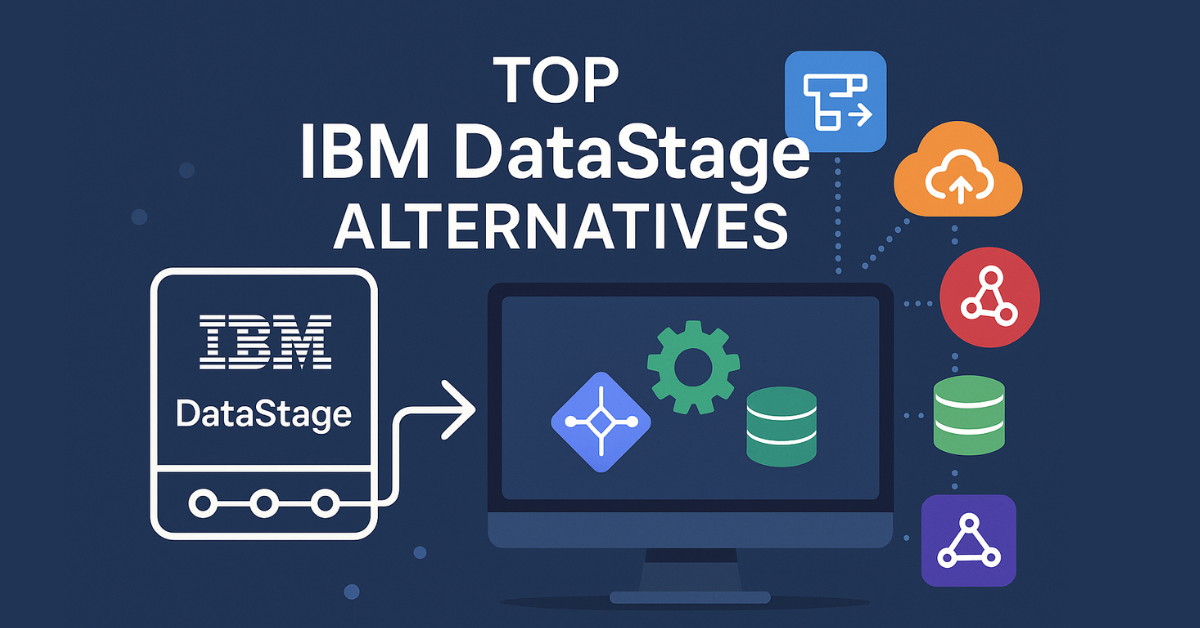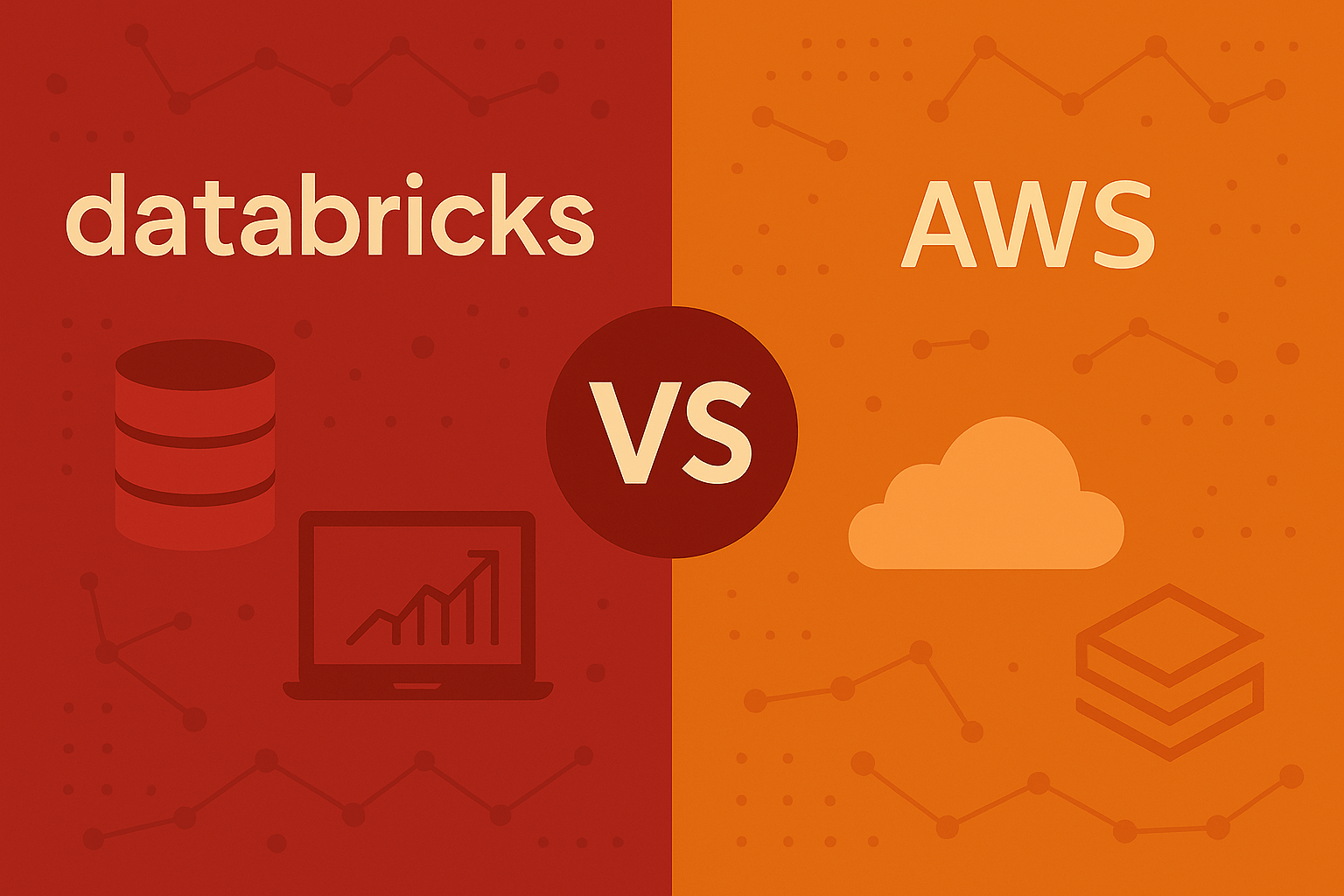Best Jitterbit Alternatives: Discover Your Ideal Integration Solution
Looking for Jitterbit alternatives?
This article lists the best options for different needs, from cost-effective to advanced features.
Overview of Jitterbit Platform

Image Source: Jitterbit
Jitterbit is a comprehensive integration platform that enables businesses to seamlessly connect applications, data sources, and devices across cloud and on-premises environments. Its flagship offering, the Harmony platform, combines Integration Platform as a Service (iPaaS), API management, Electronic Data Interchange (EDI), and low-code application development into a unified solution. Designed for both IT professionals and business users, Jitterbit facilitates rapid deployment of integrations, workflow automation, and real-time data synchronization, thereby enhancing operational efficiency and accelerating digital transformation.
The 12 Top Jitterbit Alternatives & Competitors for 2025

Choosing a Jitterbit alternative depends on your industry and specific needs. Here are the top contenders for 2025:
|
Tool |
Best For |
Code Level |
|---|---|---|
|
Factory Thread |
Manufacturing-specific integrations |
Low-Code |
|
Boomi |
AI-driven automation |
Low-Code |
|
MuleSoft |
API management |
Developer-heavy |
|
Workato |
No-code business automation |
No-Code |
|
SnapLogic |
High-volume pipelines |
Low-Code |
|
Informatica |
Enterprise data governance |
Technical teams |
|
Jitterbit |
Quick general integrations |
Low-Code |
|
Celigo |
E-commerce app integration |
No-Code |
|
SAP |
ERP-centric integrations |
Technical |
|
Zapier |
Simple workflows for SMBs |
No-Code |
|
Oracle |
Large-scale enterprise apps |
Developer-heavy |
|
Adeptia |
B2B partner integration |
Business+IT Team |
Factory Thread - Best for Manufacturing Data Integration
Factory Thread is a modern data virtualization platform purpose-built for manufacturers. It unifies production, quality, and business data without duplication, enabling seamless, real-time insights. Designed with a low-code interface and AI-assisted workflow automation, Factory Thread supports on-prem, cloud, and edge deployments—ideal for environments with strict data control or limited connectivity.
Why Factory Thread is the Top Jitterbit Alternative in 2025
While Jitterbit is known for its ease of setup and broad integration capabilities, Factory Thread excels in manufacturing-specific use cases. It offers pre-built connectors for ERP, MES, CRM, and IoT systems, enabling operational integration without the need for custom code. Unlike Jitterbit, Factory Thread’s data federation approach eliminates redundancy and simplifies infrastructure. Its real-time monitoring, centralized governance, and role-based access controls are tailored to meet the complex demands of industrial environments—making it a superior option for manufacturers needing more than generic integration tools.
What Factory Thread is Ideal For
Factory Thread is perfect for manufacturing teams who need to sync ERP and MES systems in real time for scheduling, quality, and inventory data. It supports deployment in secure, on-prem environments without requiring constant internet access. Non-technical users can build and manage workflows through a drag-and-drop interface, while operations teams benefit from real-time health dashboards and alerts. Factory Thread also helps organizations maintain compliance and governance through audit-ready role-based access controls.
Factory Thread vs Jitterbit: 2025 Comparison
|
Feature / Aspect |
Factory Thread |
Jitterbit |
|---|---|---|
|
Primary Use Case |
Manufacturing Data Integration |
General-purpose data & app integration |
|
Target Users |
Manufacturing engineers, operations teams, IT analysts |
IT departments, business app developers |
|
Integration Method |
Data federation (no duplication), low-code AI-assisted workflows |
Pre-built connectors, low-code platform |
|
Deployment Options |
Cloud, on-premises, and edge (supports disconnected runtime) |
Cloud and on-premises |
|
Monitoring & Alerts |
Real-time dashboards, alerts, message-level tracing |
Monitoring available, more basic alerting |
|
Security & Compliance |
Role-based access, encryption, governance-ready auditing |
Security features available, less manufacturing-specific |
|
Customization |
Drag-and-drop with AI prompt support; reusable domain-specific blocks |
Limited for highly specialized industrial flows |
|
Data Sources Supported |
SAP, Oracle, Siemens Opcenter, flat files, REST APIs |
SAP, Oracle, Salesforce, flat files, REST APIs |
|
Best Fit |
Real-time manufacturing process optimization and KPI visibility |
Quick integration setup and general business process syncing |
|
Pricing |
Not publicly listed; enterprise-focused |
Not publicly listed; varies by feature tier |
Summary:
-
Factory Thread is ideal for manufacturers seeking robust integration, real-time automation, and operational dashboards with minimal coding.
-
Jitterbit is better suited for quick, general-purpose integrations across cloud and on-prem systems in diverse industries.
Boomi - Best for AI-Driven Automation

Features:
-
AI-driven automation
-
API documentation agent using generative AI
Pros:
-
Seamless application and data integration
-
Predictive analytics for process improvement* Can be complex for beginners
-
Higher cost for advanced features
Boomi, an integrated platform as a service (iPaaS), connects applications, data and APIs with a focus on AI-driven automation. Its AI Studio allows to orchestrate tasks across multiple systems and even physical robots to increase overall efficiency. Boomi’s API Documentation Agent uses generative AI to create structured documentation from OpenAPI specifications.
Boomi has over 23,000 global customers and is a leader in integration with innovative solutions that simplify complex workflows. Its predictive analytics enhance integration and decision making with a focus on operational resilience and delivery consistency, especially in SAP integration updates.
However, it can be complex for beginners and the higher cost for advanced features might be a consideration for smaller enterprises.
MuleSoft - Best for API Management

Features:
-
Advanced API management
-
API marketplace with pre-built APIs
Pros:
-
Single interface for APIs and integrations
-
Scalable architecture
Cons:
-
Expensive for small enterprises
-
Steeper learning curve
MuleSoft is an integration and API platform that helps organizations connect applications, data and devices. Key features include:
-
A single interface to design, monitor and secure APIs and integrations to increase workflow visibility.
-
Advanced API management to support large scale ecosystems to ensure high performance and security.
-
API-first approach to accelerate innovation, reduce development costs and speed up time-to-market for new services and applications using the Mulesoft Anypoint Platform.
Its scalable architecture is designed to handle high performance demands to support enterprise operations. MuleSoft’s API marketplace with pre-built APIs, connectors and templates reduces deployment time. However it can be expensive for smaller enterprises and its many features come with a steeper learning curve.
Workato - Best for No-Code Automation

Features:
-
No-code interface
-
Connects over 10,000 applications
Pros:
-
Technical and non-technical users
-
Extensive security features
Cons:
-
Limited customization for highly technical users with limited technical expertise
-
Pricing not transparent
Workato is a leading integration and workflow automation platform that combines AI agents with enterprise-grade integration capabilities. Its no-code interface allows both technical and non-technical users to create powerful automations without extensive coding knowledge.
Workato connects workflows across over 10,000 applications, supporting a vast ecosystem including platforms like Salesforce, Slack, and AWS. It offers extensive built-in security features, such as end-to-end encryption, ensuring data privacy and protection during integration.
Workato’s no-code interface empowers users across various departments like IT, HR, Marketing, and Finance to automate workflows seamlessly. While it excels in providing a user-friendly experience for non-technical users, it may offer limited customization options for highly technical users, and its pricing details are not transparent. Additionally, the platform supports automated workflows that enhance efficiency.
SnapLogic - Best for Low-Code/No-Code Integrations

Features:
-
Data and application integration
-
Low-code platform
Pros:
-
Scalable for high-volume data pipelines
-
Intelligent automation with Iris AI
Cons:
-
Pricing not transparent
-
May require training for complex integrations
SnapLogic is an all-in-one data and application integration platform that unifies, simplifies, and amplifies the integration of AI, applications, and data. Known for its user-friendly design and innovative approach to cloud-based middleware solutions, SnapLogic’s low-code platform enables swift deployment of integrations across numerous applications.
Its scalability accommodates business growth, making it suitable for high-volume integrations. SnapLogic uses Iris AI technology for intelligent automation, efficiently handling complex processes and providing complex integration solutions.
SnapLogic serves businesses that need a fast, scalable, and efficient data integration solution. However, the platform’s pricing is not transparent, and it may require training for users to handle complex integrations effectively. Its intelligent automation features and use cases for high-volume data pipelines make it a standout choice for organizations with significant integration needs.
Informatica - Best for Enterprise Data Management

Specifications:
-
Data cataloging, integration, quality observability, and MDM
-
CLAIRE AI engine
Pros:
-
Full data management
-
Large enterprise
Cons:
-
Extra cost for special features
-
Too complex for small business
Informatica is a data management solutions company that helps organizations turn complex data into business value. The platform has:
-
Data cataloging
-
Integration
-
Quality observability
-
MDM Its CLAIRE AI engine automates complex data integration tasks.
Informatica Cloud Data Integration is for large enterprises with multiple data ecosystems, scalability and big data data integration tasks. Cloud services management capabilities unify, enrich and leverage data views while maintaining governance and privacy through electronic data interchange.
But it’s extra cost for features and complex for small business. Informatica is for large enterprises to optimize data investments and create a more agile data driven environment.
Celigo – Best for E-commerce Integration

Features:
-
Prebuilt integrations for Shopify, NetSuite, Salesforce, and more
-
Designed for fast e-commerce data syncing
Pros:
-
Simple UI for non-technical users
-
Pre-mapped flows for faster deployments
Cons:
-
Limited flexibility for custom use cases
SAP – Best for Enterprise Resource Planning (ERP)
![]()
Features:
-
Deep integration with SAP ERP modules
-
Real-time process orchestration
Pros:
-
Ideal for enterprises already using SAP ecosystem
-
Enterprise-grade security and scalability
Cons:
-
Expensive and complex to set up for small businesses
Zapier – Best for Simple Workflow Automation

Features:
-
6000+ app integrations
-
Point-and-click automation builder
Pros:
-
Fast setup for simple automations
-
Excellent for non-developers
Cons:
-
Not built for large-scale data operations or enterprises
Oracle – Best for Enterprise Applications

Features:
-
Native integrations with Oracle Cloud Suite
-
Supports both on-prem and hybrid cloud
Pros:
-
Strong for enterprise-scale workloads
-
Global compliance and support
Cons:
-
Steep learning curve
-
High cost
Adeptia – Best for Secure B2B Integrations

Features:
-
Secure partner data exchange
-
Self-service integration tools
Pros:
-
Designed for IT and business collaboration
-
Great for B2B data automation
Cons:
-
Smaller ecosystem compared to larger players
How to Choose the Right Data Integration Platform
Choosing the right data integration platform can be tough with so many options and features. The decision should be guided by key factors to ensure the platform fits your business needs and can scale with your organization.
Compatibility with existing systems is key. The integration platform should integrate with your current software and hardware infrastructure without costly overhauls. Identify your business needs, whether it’s real-time data access, robust security or advanced automation capabilities to manage integrations and narrow down your choices.
Scalability is another important consideration. As your business grows the platform should handle increased data volumes and additional workflows without extra costs. Cost efficiency includes not just the initial investment but also maintenance, customization and scaling costs. Transparent pricing models help you budget better.
User feedback and reviews provide valuable insights into the platform’s reliability and performance. User friendly interface means quick and easy integrations, minimal learning curve for your team. Free trials and demos are a practical way to try features hands on and assess the platform for your needs.
Security features are non-negotiable when handling sensitive data. Look for platforms with robust encryption and compliance certifications like GDPR, HIPAA and SOC 2 to ensure data privacy and protection. The right platform gives you data visibility and operational efficiency, it’s part of your digital transformation strategy.
Summary
In summary the data integration platforms in 2025 have many options for different business needs. From Factory Thread’s manufacturing specific capabilities to Boomi’s AI driven automation and MuleSoft’s full API management each platform has its strengths. Evaluate your needs, consider scalability and ensure compatibility with existing systems are the key to choosing the right integration platform for your organization. By making an informed choice you can streamline your data processes, improve operational efficiency and drive your business forward.
FAQs
What makes Factory Thread the best for manufacturing data integration?
Factory Thread is the best for manufacturing data integration because it’s designed for manufacturers, gives real-time access to production, quality and business data and integrates with key systems like ERP, MES and CRM. This means faster and more informed decision making.
What are the benefits of Workato no-code automation?
Workato has a user friendly no-code interface that allows powerful automations without coding expertise so it’s for everyone. Plus it can connect to over 10,000 applications and has robust security features so it’s more functional and reliable.
How does SnapLogic do low-code/no-code integrations?
SnapLogic does low-code/no-code integrations through its user friendly platform that deploys quickly across applications, with its scalable architecture and Iris AI powered automation. This is great for high volume data pipelines and for users with varying levels of technical expertise.
What is the best Jitterbit alternative for e-commerce businesses?
Celigo is ideal for e-commerce due to its prebuilt flows for Shopify, NetSuite, and Salesforce.
Which Jitterbit competitor is best for ERP integrations?
SAP and Oracle are built specifically for ERP environments with high compliance and scalability.
Share this
You May Also Like
These Related Stories

Matillion vs MuleSoft: A Comprehensive Comparison for Data Integration

Top IBM DataStage Alternatives to Enhance Your Data Integration Strategy



No Comments Yet
Let us know what you think